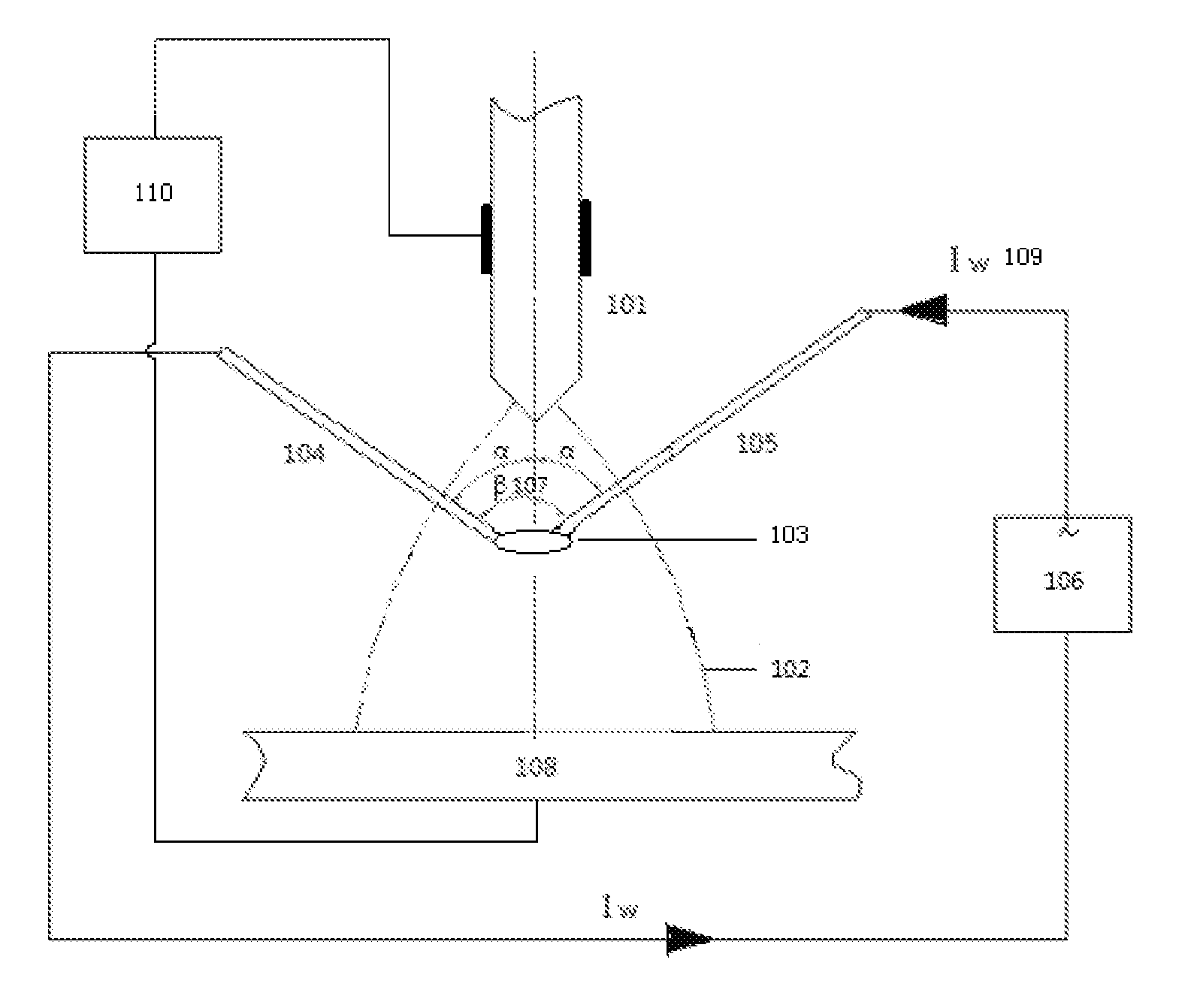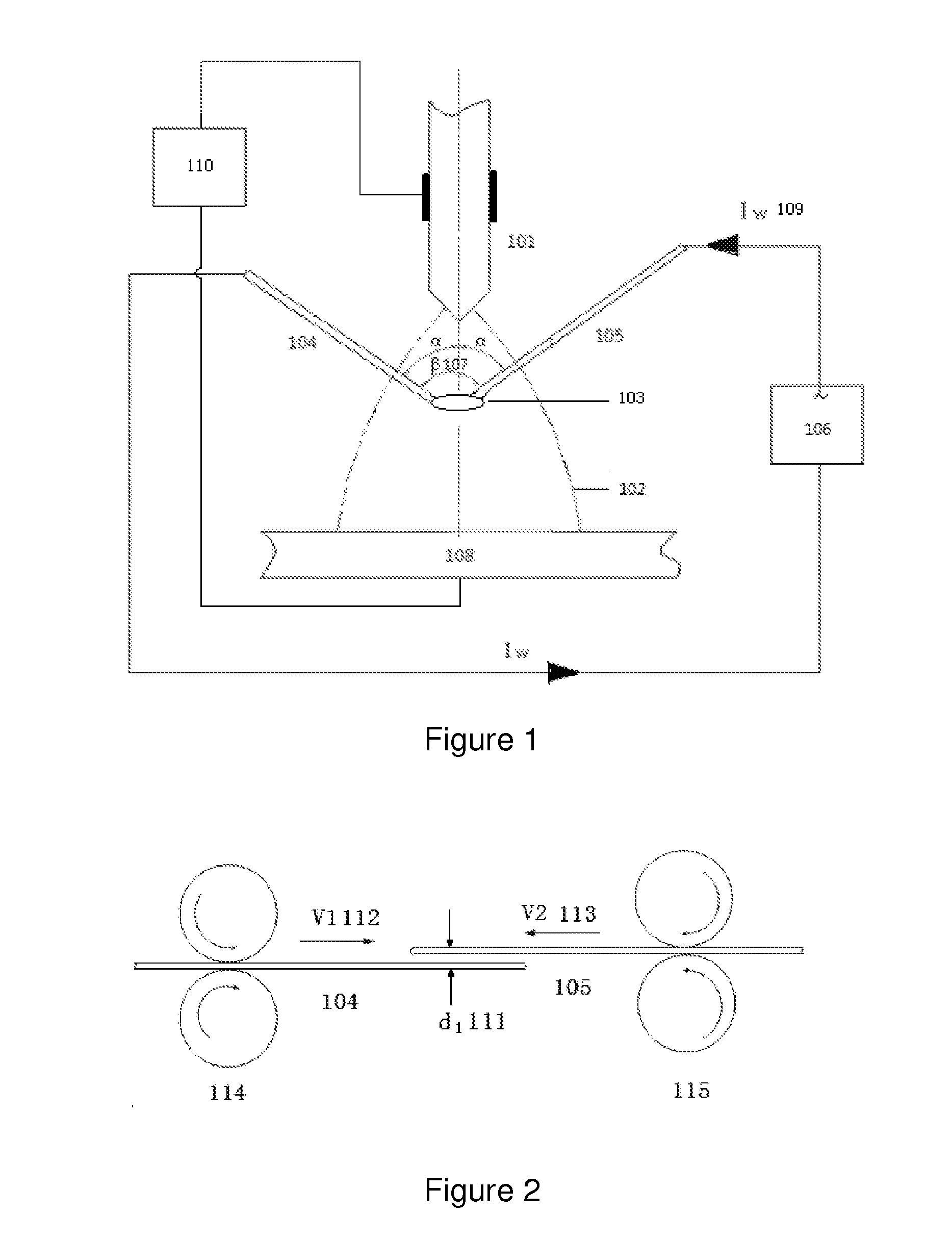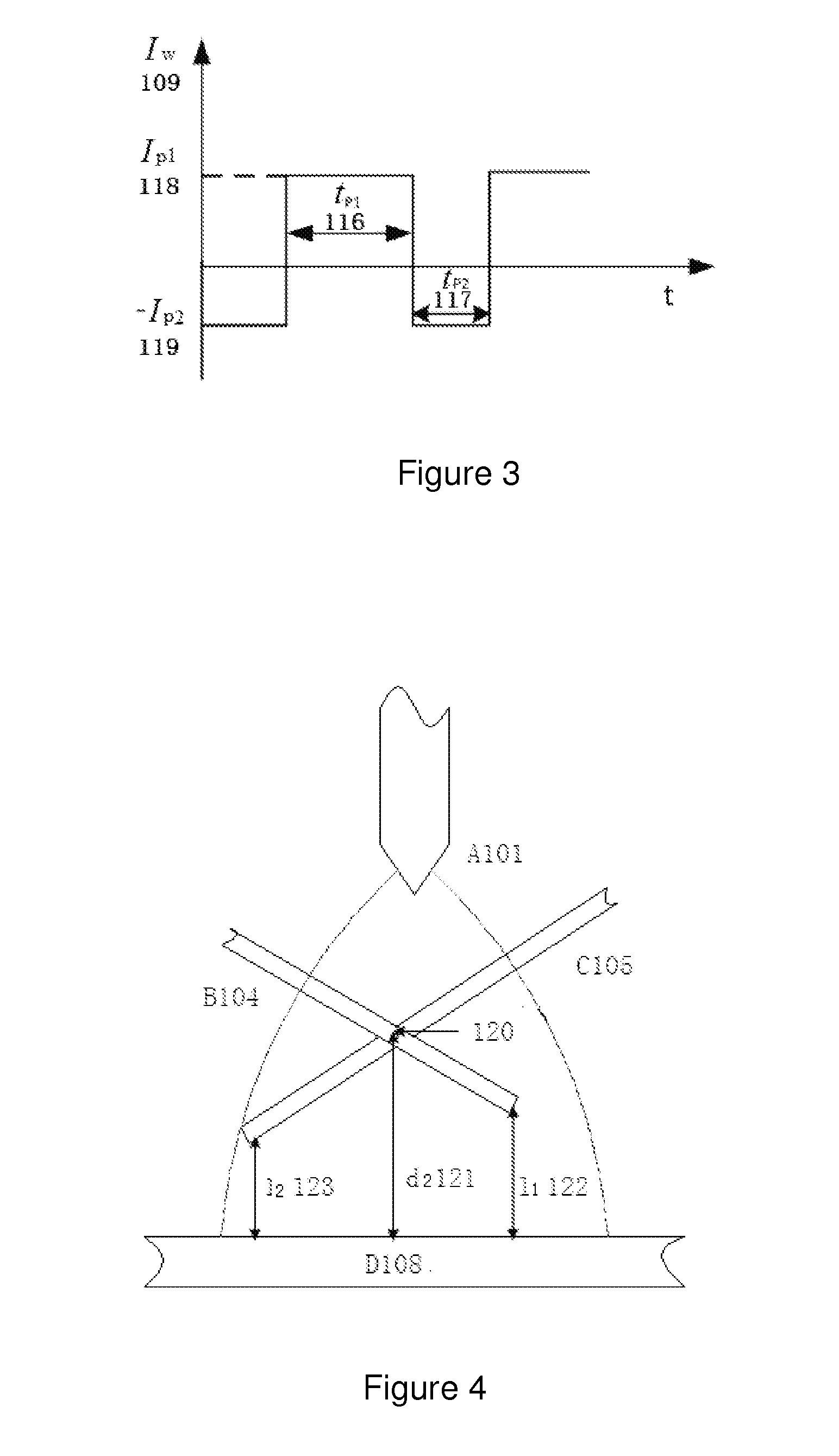Gas tungsten arc welding with cross ac arcing twin wires
a technology of cross ac arcing which is applied in the field of gas metal arc welding and gas tungsten arc welding, can solve the problems of low degree of automation and lack of efficient welding methods, and the traditional arc welding process has inherent limitations to achieve the desired free control or free, and achieves the effect of low heat input and high deposition
- Summary
- Abstract
- Description
- Claims
- Application Information
AI Technical Summary
Benefits of technology
Problems solved by technology
Method used
Image
Examples
Embodiment Construction
[0020]The tungsten 101 establishes a gas tungsten arc (or PA) 102 with the work-piece 108. Wire I 104 and wire II 105 are fed into the GTA (or PA) 102 environment from opposite sides. Wire I 104 and wire II 105 are connected to an alternate-current (AC) power supply 106. The extensions of the two wires form a crossing angle β=2α107 where α is the angle of each wire with the tungsten 101.
[0021]The distance between the extensions of the two wires is d1 111. Due to the GTA (or PA), the wires are not insulated and ionized plasma exists in the gap defined by d1 111. An arc, i.e., the inter-wire arc 103, can be established if the AC power supply 106 supplies a non-zero wire current Iw 109. The anode and cathode of this inter-wire arc 103 will melt the two wires 104 and 105. As a result, almost all the energy supplied by the inter-wire arc 103 will be consumed on melting the wires without energy be wasted. In addition, the wires can be melted at any reasonably high speeds by increasing the...
PUM
| Property | Measurement | Unit |
|---|---|---|
| distance | aaaaa | aaaaa |
| current | aaaaa | aaaaa |
| voltage | aaaaa | aaaaa |
Abstract
Description
Claims
Application Information
 Login to View More
Login to View More - R&D
- Intellectual Property
- Life Sciences
- Materials
- Tech Scout
- Unparalleled Data Quality
- Higher Quality Content
- 60% Fewer Hallucinations
Browse by: Latest US Patents, China's latest patents, Technical Efficacy Thesaurus, Application Domain, Technology Topic, Popular Technical Reports.
© 2025 PatSnap. All rights reserved.Legal|Privacy policy|Modern Slavery Act Transparency Statement|Sitemap|About US| Contact US: help@patsnap.com



